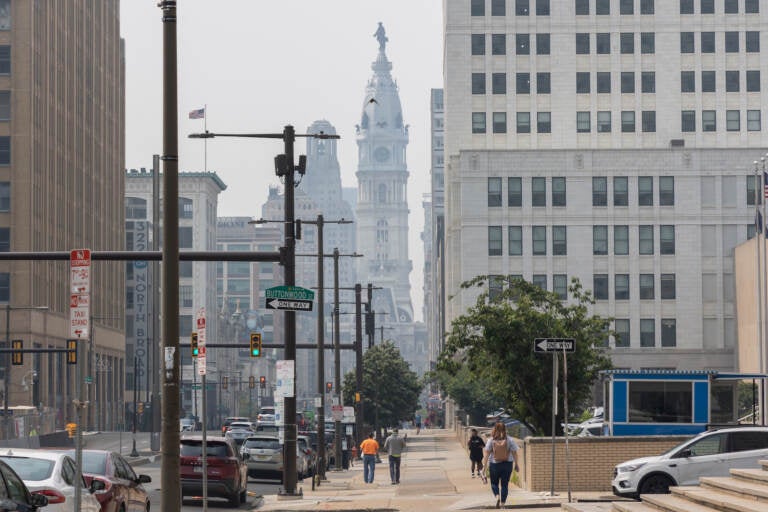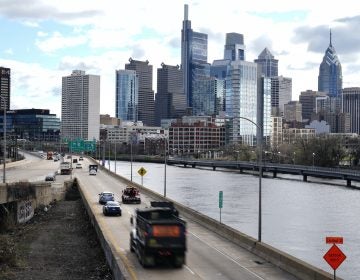Pa. extends Code Orange for Philly area as wildfires fuel poor air quality
Under a Code Orange, air quality may be unhealthy for vulnerable groups such as children, people with asthma, people with heart or lung disease, and older adults.

File photo: Visibility in downtown Philadelphia was greatly reduced by smoke drifting into the city from wildfires on June 7, 2023. (Kimberly Paynter/WHYY)
What you need to know
- Vulnerable residents are encouraged to stay indoors and limit or avoid outdoor activities.
- Here’s how to understand your air quality index, and how wildfire smoke affects your health.
- More massive wildfires can be expected this summer thanks to climate change.
Pennsylvania has extended a Code Orange for the Philadelphia area into Tuesday, as wildfires continue to fuel air quality concerns.
The state Department of Environmental Protection issued the Air Quality Action Day for fine particulate matter for the following areas:
- Philadelphia area, which includes Bucks, Chester, Delaware, Montgomery, and Philadelphia counties
- Lehigh Valley-Berks area, which includes Berks, Lehigh, and Northampton counties
- Susquehanna Valley, which includes Cumberland, Dauphin, Lancaster, Lebanon, and York counties
- Scranton/Wilkes-Barre area, which includes Lackawanna and Luzerne counties
- State College area, which includes Centre County
- Williamsport area, which includes Lycoming County
- Bradford, Susquehanna, Sullivan, Wayne, Wyoming, Pike, Monroe, Carbon, Schuykill, Columbia, Montour, Northumberland, Tioga, Union, and Snyder counties
Officials noted that local conditions could fall within the Code Red range, particularly overnight and in the early morning, and encouraged residents to visit AirNow.gov to check local conditions.
Under a Code Red, air pollution concentrations are considered unhealthy for the general population and outdoor activity should be avoided.
Under Code Red conditions, experts recommend that everyone avoid the outdoors, keep windows shut, and run air conditioning on a re-circulation setting. Those who go outside are encouraged to wear a high-quality mask, such as an N-95 or KN-95, to reduce pollution exposure.
Under a Code Orange, air pollution concentrations may be unhealthy for vulnerable groups such as children, people with asthma, people with heart or lung disease, and older adults.

Get daily updates from WHYY News!
WHYY is your source for fact-based, in-depth journalism and information. As a nonprofit organization, we rely on financial support from readers like you. Please give today.





